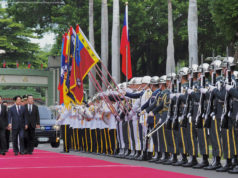Array
The US has a good head start on China when it comes to plans to send astronauts to the moon (or back to the moon in our case). But while the Chinese schedule appears to be moving ahead smoothly, the US schedule has been slipping thanks to regulatory issues.
China’s last moon mission, the Chang’e-5, landed on the moon in 2020 and returned samples to the earth. It’s next mission, expected to launch next year, will do the same thing but this time the samples will come from the far side of the moon. That will be followed by two more in 2026 and 2028 which are seen as preparation for a crewed mission to the moon. China hasn’t put an exact date on the crewed mission but has said it hopes to do it before 2030.
The mission, expected to take place before 2030, is part of a project to establish a lunar research station. It will investigate how best to build the facility, and carry out moon exploration tasks and other experiments, Zhang said.
Two launch vehicles will send a moon surface lander and manned spacecraft into lunar orbit, before they dock with each other, according to state-run Global Times. After docking, the Chinese astronauts on board the spacecraft will enter the lander, which is used to descend to the moon’s surface…
To prepare for the mission, Chinese researchers are busy developing all the necessary equipment including moon suits, manned lunar rovers, manned spaceships and moon landers, Xinhua reported.
The US has also been gearing up for a manned mission to the moon. But according to Space X, our schedule could fall behind China’s schedule if delays continue.
Late last year, NASA successfully completed the Artemis I mission, the first in its renewed lunar effort, sending the Orion crew capsule, without anyone on board, on a trip around the moon. By the end of next year, or early 2025, it intends to fly the Artemis II mission, sending Orion past the moon again, this time with a crew of four: three NASA astronauts — Christina Koch, Victor Glover and Reid Wiseman — as well as a Canadian astronaut, Jeremy Hansen.
But the timeline for a human landing, known as Artemis III, is uncertain.






